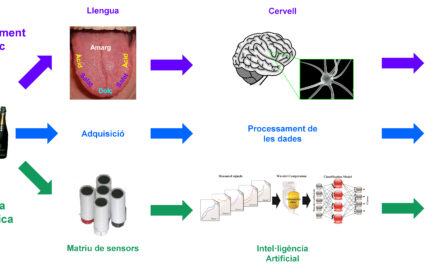A new study conducted by researchers at Rutgers University-Newark has provided valuable insights into the role of the primate orbitofrontal cortex (OFC) in value-based decision-making. The OFC, which is located in the frontal lobe of the brain, is known to be involved in the process of weighing the potential outcomes of different decisions and selecting the most favorable option.
Previous research has suggested that the OFC represents the values of various decision options. However, the specific neural mechanisms through which the OFC transforms these represented values into actual decisions have remained poorly understood.
To gain a better understanding of the OFC’s contribution to decision-making, the researchers conducted a study involving monkeys. Published in Nature Neuroscience, the study found a consistent relationship between the choices made by the monkeys and the value signals encoded by groups of neurons in their OFC while they were selecting between different options.
The researchers were inspired by three distinct lines of research. The first involved previous studies showing that the OFC contains neurons, known as value-coding neurons, that create a subjective representation of the values of different decision options. The firing rate of these neurons varies depending on how desirable or undesirable a decision is for the primate.
Despite the well-documented existence of these value-coding neurons, their role in decision-making has not been fully elucidated. Therefore, the researchers sought to understand how these neurons contribute to the decision-making process.
The second line of research that influenced the study focused on visual perception and judgments. It examined the relationship between decisions made by primates based on visual information and the activity of individual neurons in their visual system. The researchers aimed to find a similar link between value-based decisions and the activity of value-coding OFC neurons.
The third line of research investigated the coding of information in the brain at the level of neuron populations. The researchers aimed to understand the contribution of OFC neurons to simple value-based decisions by studying the activity of populations of neurons recorded simultaneously, rather than focusing on individual neurons.
In the study, macaque monkeys were trained to play a simple decision-making game. They were presented with two visually distinct objects, each associated with a different amount of juice reward. The monkeys’ choices between these equally valuable options varied from trial to trial.
The researchers recorded the activity of neuron populations in the monkeys’ OFC using a technique that measures the activity of multiple neurons simultaneously. They analyzed these recordings in conjunction with the monkeys’ decisions during the game.
By applying a decoding method, the researchers identified patterns of neural activity that represented the values of the offered options. They found that the variability in the monkeys’ decisions on trials with equal-value options could be explained by the variability in the population representation of value derived from the ensemble activity of OFC neurons.
These findings confirmed the weak associations found in previous studies between individual OFC neurons and value-based decisions. The researchers concluded that the activity patterns of populations of OFC neurons, rather than individual neurons, are responsible for creating the sense of subjective value that influences decision-making.
The researchers also discovered overlapping neural activity patterns associated with the monkeys’ choices and the encoding of value. However, these patterns were not precisely the same, suggesting that the OFC may represent multiple behaviorally relevant variables.
The recent study shed light on the neural basis of everyday decision-making and its potential implications for individuals with mental illnesses. Understanding how the OFC represents variables such as probability and effort, as well as how these representations adapt and change in different contexts, could provide valuable insights into the mechanisms that underlie decision-making in both healthy individuals and those with mental illness. Further research is needed to explore these aspects in more detail.
*Note:
1. Source: Coherent Market Insights, Public sources, Desk research
2. We have leveraged AI tools to mine information and compile it



